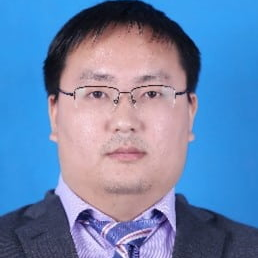Piezoelectric Energy Harvesters: From Materials to Devices
A special issue of Micromachines (ISSN 2072-666X). This special issue belongs to the section "D:Materials and Processing".
Deadline for manuscript submissions: closed (31 July 2023) | Viewed by 7213
Special Issue Editors
Interests: piezoelectric energy harvesting; nonlinear dynamics; mechanical metamaterials; smart materials and structures
Special Issues, Collections and Topics in MDPI journals
Interests: stretchable electronics; transient sensors; mechanics of materials; advanced manufacturing
Special Issues, Collections and Topics in MDPI journals
Interests: elastic metamaterials; energy harvesting; vibration suppression; optimization; artificial neural network
Special Issues, Collections and Topics in MDPI journals
Interests: smart materials; energy harvesting; structural dynamics; signal processing; machine learning
Interests: piezoelectric energy harvesting; flow-induced vibrations; energy harvesting from flow phenomena
Special Issues, Collections and Topics in MDPI journals
Special Issue Information
Dear Colleagues,
Piezoelectric energy harvesting technology has been a promising solution to realizing the perpetual operation of low-power consumption wireless devices. Recent advances in intelligent materials, nonlinear structures, metamaterials, and electronic interface circuits have promoted the fast development of vibration/acoustic/wind/ocean energy harvesting technology. High-performance intelligent and flexible materials have been synthesized and used to increase energy transduction efficiency. Innovative structures based on nonlinear, self-adaptive mechanisms and metamaterial concepts have been employed to achieve broadband energy harvesting and improve robustness. Meanwhile, various flow-induced vibration phenomena, such as galloping, wake galloping, flutter, and vortex-induced vibration (VIV), have been extensively exploited for small-scale wind/ocean energy harvesting. Moreover, efforts have also been devoted to developing advanced electronic circuits to boost energy harvesting efficiency from the circuit design perspective. This Special Issue aims to collect and present the latest research in this field on a wide range of topics that include, but are not limited to:
- Metamaterials for energy harvesting and vibration suppression;
- Flexible/triboelectric materials and biosensors;
- Nonlinear materials and structures for energy harvesting;
- Wind/ocean/wave energy harvesting;
- Advanced energy harvesting circuits;
- Energy harvesting technology in engineering applications.
Dr. Chunbo Lan
Dr. Huanyu Cheng
Dr. Guobiao Hu
Dr. Yabin Liao
Prof. Dr. Junlei Wang
Guest Editors
Manuscript Submission Information
Manuscripts should be submitted online at www.mdpi.com by registering and logging in to this website. Once you are registered, click here to go to the submission form. Manuscripts can be submitted until the deadline. All submissions that pass pre-check are peer-reviewed. Accepted papers will be published continuously in the journal (as soon as accepted) and will be listed together on the special issue website. Research articles, review articles as well as communications are invited. For planned papers, a title and short abstract (about 100 words) can be sent to the Editorial Office for announcement on this website.
Submitted manuscripts should not have been published previously, nor be under consideration for publication elsewhere (except conference proceedings papers). All manuscripts are thoroughly refereed through a single-blind peer-review process. A guide for authors and other relevant information for submission of manuscripts is available on the Instructions for Authors page. Micromachines is an international peer-reviewed open access monthly journal published by MDPI.
Please visit the Instructions for Authors page before submitting a manuscript. The Article Processing Charge (APC) for publication in this open access journal is 2600 CHF (Swiss Francs). Submitted papers should be well formatted and use good English. Authors may use MDPI's English editing service prior to publication or during author revisions.
Keywords
- piezoelectric
- energy harvesting
- metamaterials
- flexible materials and biosensors
- flow energy harvesting
- nonlinear
Benefits of Publishing in a Special Issue
- Ease of navigation: Grouping papers by topic helps scholars navigate broad scope journals more efficiently.
- Greater discoverability: Special Issues support the reach and impact of scientific research. Articles in Special Issues are more discoverable and cited more frequently.
- Expansion of research network: Special Issues facilitate connections among authors, fostering scientific collaborations.
- External promotion: Articles in Special Issues are often promoted through the journal's social media, increasing their visibility.
- e-Book format: Special Issues with more than 10 articles can be published as dedicated e-books, ensuring wide and rapid dissemination.
Further information on MDPI's Special Issue policies can be found here.










